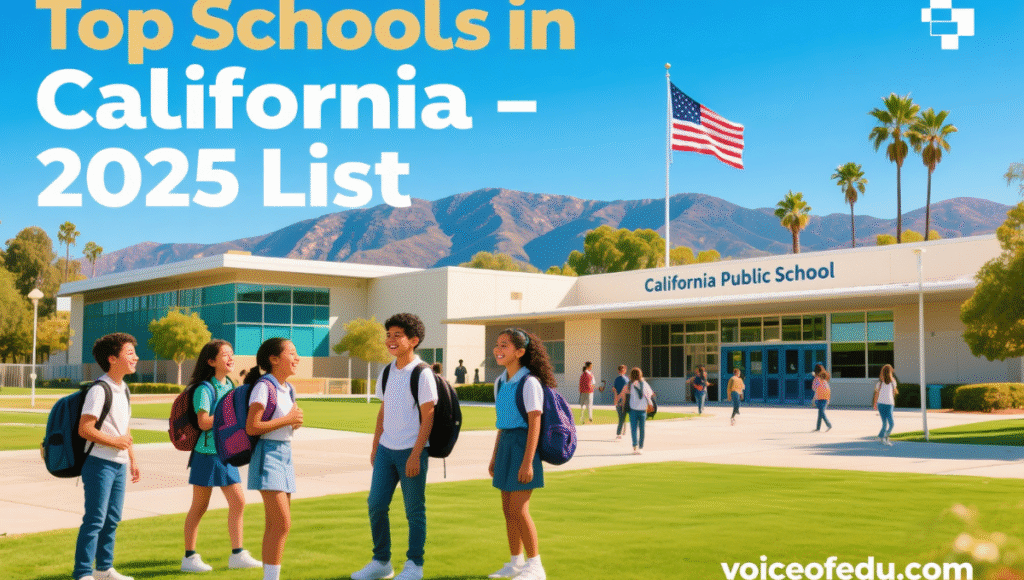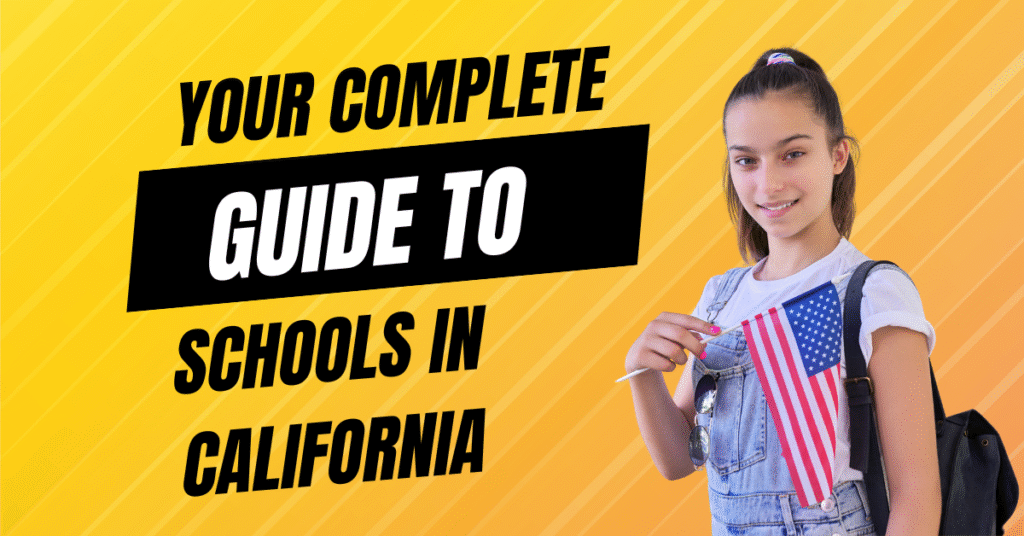California shines when it comes to education, and families here have choices that truly make a difference. Whether you’re searching for public, private, charter, or magnet schools, there’s a path for every child’s journey. This guide breaks down your options, shares tips, and brings clarity, all in straightforward, human language.
Comprehensive Guide to Public and Private Schools in California
Public Schools: Accessibility and Diversity
If you live in California, public schools open their doors for free. Schools here cater to a huge range of cultures, home languages, and learning needs. Many offer special language support, robust special education, and programs to challenge gifted students. Science, technology, the arts, and bilingual tracks are more available now, helping kids stay motivated and confident.
- Tuition is always free for state residents.
- Courses follow the California curriculum, with AP classes for college-bound students.
- Kids join after-school sports, band, robotics, and all kinds of clubs.
- Support teams for English learners and students with special needs.
Private Schools: Personalized Education and Tradition
Private schools focus on creating close-knit communities. Classes tend to be smaller, so teachers really know their students. Whether you want a particular approach, prefer a faith-based education, or look for innovative programs, there’s something here for nearly every family. Financial help is often available if tuition feels steep.
- Strong programs in academics, art, and leadership.
- College counseling and alumni groups that help with the future.
- Choose between faith-based and non-religious campuses.
- Big emphasis on projects, teamwork, and character-building.

Funding and Resources
Public schools get their money from taxes, so richer districts generally offer fancier buildings and better equipment. Private schools rely on tuition, donations, and sometimes generous alumni. More resources can mean more exciting classes or clubs, but families should always weigh cost and opportunities.
Choosing the Right Fit
Every child has different dreams and needs. Take time to look up school ratings and results. Check out their activities—do they match your child’s strengths? Visit in person. Notice the atmosphere. Meet teachers and staff. Read parents’ reviews and trust your observations about what feels right for your child.
Explore California’s Leading Charter and Magnet Schools
Charter Schools: Flexible and Innovative
Charter schools are public but break the mold with new teaching ideas. Many focus on hands-on science, languages, or creativity. Their small classes allow kids to ask questions and build strong relationships with teachers. Anyone in the district can apply, but seats may fill fast, so lotteries happen when spots are limited.
- Unique teaching styles and special subjects like coding or art.
- Smaller classes for more teacher attention.
- Lottery enrollment if too many families are interested.
- Schools are rated by their students’ performance.
Magnet Schools: Specialized Excellence
Magnet schools have a special theme—arts, science, technology, or even international studies. Students apply, sometimes showing a portfolio or passing a test. Learning goes deeper, with group projects and partnerships with local organizations. Kids who join often feel inspired and motivated by shared interests.
- Admission based on skills, interests, or achievements.
- Advanced courses and teamwork on big projects.
- Links with businesses or universities for extra opportunities.
- Scholarships, internships, and more for driven students.
Success and Enrollment Tips
Charter and magnet schools continue to grow because they spark kids’ curiosity and help them thrive. Application deadlines matter; gather your documents early and watch for school info nights. Competition can be intense, but don’t let that discourage you—persistence pays off.
Region-Wise Overview of Public, Charter, and Magnet Schools in California
| Region | Notable School Districts | Charter & Magnet Schools | Special Programs |
|---|---|---|---|
| Los Angeles | LAUSD, Pasadena USD, Santa Monica-Malibu USD | Magnolia Science Academy, Palms Middle Magnet | Arts, STEM, Language Immersion |
| San Francisco | SFUSD, Marin County SD | Gateway High, Downtown High Magnet | Environmental Science, Humanities |
| San Diego | SDUSD, Poway USD | Monarch School, Design39Campus | Project-Based Learning, STEM |
| Sacramento | Sacramento City USD, Elk Grove USD | Met Sacramento Charter, West Campus | Leadership, Technology |
Best Universities and Colleges in California
- Stanford University: Renowned for bringing research and entrepreneurship together.
- University of California System: Top schools like UCLA, UC Berkeley, and UC San Diego push the limits of science and learning.
- California State University: Well-respected and affordable, with campuses statewide for nearly every field.
- Private Universities: USC and Chapman University provide small classes and strong support for every student.
Californian universities help their graduates shine in careers and communities around the world.
How California Supports Diversity and Global Education
California’s schools value a mosaic of languages and cultures.
- Many offer bilingual or even trilingual classes.
- Lessons include stories, heroes, and traditions from all backgrounds.
- Students can study abroad or join projects across the globe.
- Support helps all kids, including those with disabilities or from underrepresented groups.
Public vs. Private Education in California: What Parents Should Know
- Cost: Public schools are free; private ones charge, but many help with scholarships.
- What’s taught: Private schools may offer unique or more flexible classes.
- Class size: Private schools might keep classes small for deeper focus.
- Activities: You’ll find both public and private schools with strong clubs, but private may offer more variety.
- Admissions: Public schools enroll local kids; private and some magnet schools need an application.
Charter Schools: Innovation in California’s K-12 System
Charter schools use personal teaching styles and up-to-date tools. Children’s strengths and needs come first. Schools work closely with families to make learning stick. Digital devices like tablets are now everyday essentials.
Magnet School Opportunities in California for Gifted Students
Magnet schools let motivated students dive into science, arts, or language programs. Classes move fast and challenge high-achievers. Entry is sometimes based on test scores, auditions, or teacher recommendations. Clubs and special projects help each child stand out.
The Rise of Year-Round Schooling in California
More schools are switching to year-round schedules. Students attend school in shorter bursts with more frequent breaks. This keeps learning fresh and limits summer “brain drain.” Families may need to rethink vacations, but children gain more balanced rest.
California School Ratings: Understanding the Grading System
School performance is tracked through test scores, graduation rates, and college prep data. Ratings like “Exemplary” or “Needs Improvement” make it easier to compare. Trusted education websites and state platforms offer the latest info to guide families.
UCLA and the Role of Research in California’s Academic Leadership
UCLA attracts major funding and stands at the forefront of science, tech, and health research. Students work alongside experts, gaining skills that matter beyond classrooms. Local and global partnerships help UCLA’s innovation reach new communities.
Opportunities for International Students in California Schools
California’s schools gladly welcome students from abroad. Support includes special help with English, peer programs, and lots of extra-curriculars. Both scholarships and financial aid may be available for those who qualify.
California’s Green Campuses and Sustainability Education
California schools lead the way with eco-friendly buildings and programs. Green science, gardening, and energy use are part of the everyday school routine. Kids learn not just what sustainability means, but how to practice it inside and outside the classroom.
Blending Technology into the California Classroom Experience
Today’s classrooms are digital playgrounds. Kids use laptops and tablets for homework and projects. Teachers get regular training to keep up with tech’s rapid pace. Even after the pandemic, online classes—blended with face-to-face lessons—are here to stay.
Stanford University: A Model of Excellence in Higher Education
Stanford is a place where ideas become action. Students work across areas of study, learn from leaders in research, and build the skills to solve real-world problems.
University of Southern California: Advancing Innovation and Equity
USC stands out with its mix of groundbreaking research and a campus that celebrates diversity. Scholarships and programs help make USC’s advantages accessible to all.
Chapman University: Personalized Learning at Its Best
Chapman’s strength is in close-knit classes and professors who really know their students. Learning here often means working on real projects and making important industry connections long before graduation.
California Community Colleges: Accessible and Affordable Pathways
Community colleges let millions of Californians begin or change careers. Whether students want a two-year degree or plan to transfer to a four-year university, there’s a place for everyone.
Academic Collaboration in California’s College System
Many colleges share credits so students can move between campuses more easily. Schools team up to offer new degrees, get students valuable on-the-job experience, and share teaching tips that help everyone succeed.
California’s Educational Vision for the Future
California’s big goals are simple: fairness and opportunity for every student. Technology keeps classrooms current. Schools are greener and more global in their approach. Above all, the aim is to help every child become skilled, thoughtful, and ready to shape tomorrow.
FAQs
Are charter schools in California tuition-free?
Yes, charter schools are public and charge no tuition.
How do magnet schools differ from regular public schools?
Magnet schools focus on special themes or subjects and may ask students to apply.
What is year-round schooling?
It means the school year is spread out with shorter, frequent breaks, helping kids keep their skills sharp.
Can international students attend California public schools?
Yes, with the needed visa and proper residency details.
How can I find the best school district in California?
Trust the California Department of Education and popular review sites for current school ratings.
If you want help with applications, tours, or scholarships, reach out to your nearby school or district. California’s education system is full of opportunity—know your options, trust your instincts, and empower your child for a bright future.

